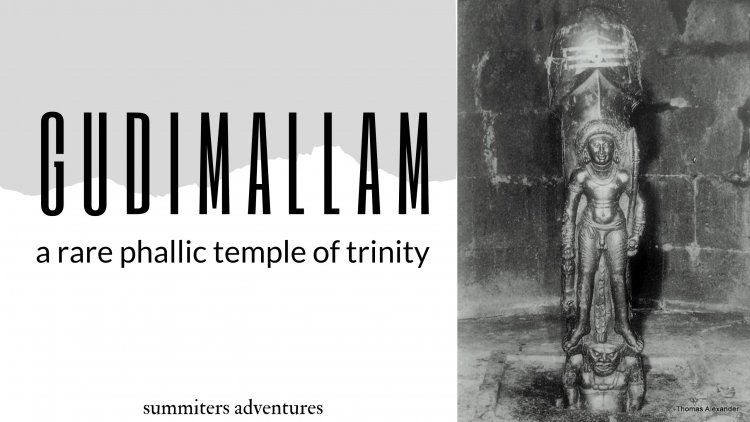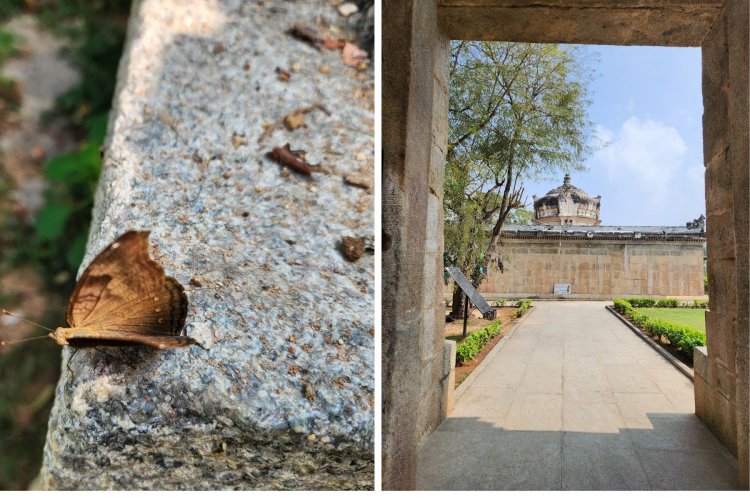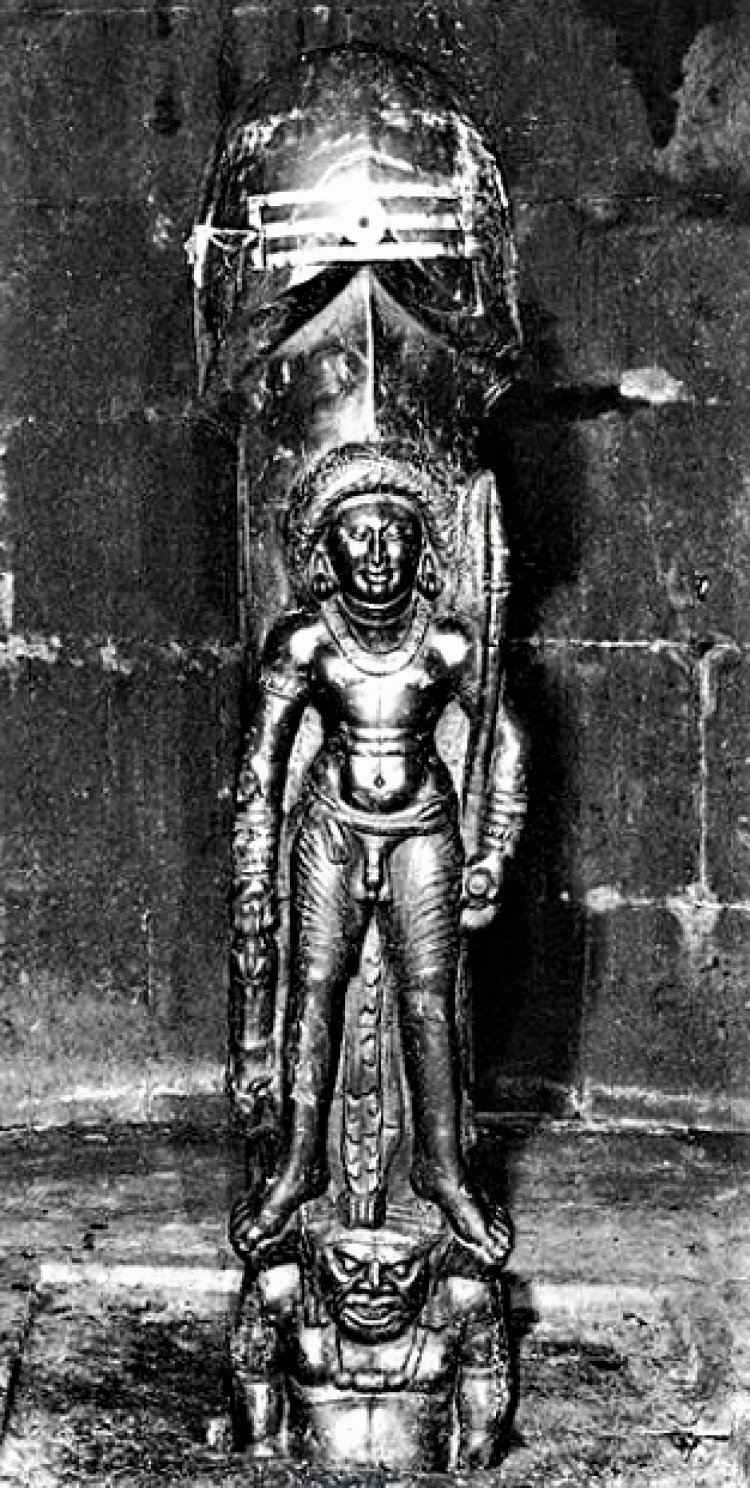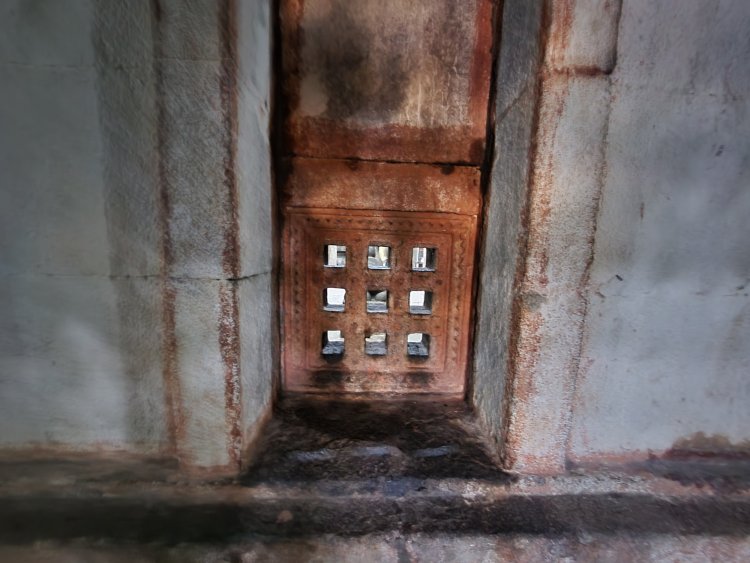Gudimallam - A Rare Phallic Temple of Trinity
A rare and unique temple of the trinity one of its kind dedicated to Lord Parashurameshwara lies sandwiched between famous Tirupati and Kalahasti temples in Andhra Pradesh. The Linga form here resembles a phallic, unique of its kind in the world. The least known temple of Gudimallam is a must-visit place for those visiting Tirupati and nearby places.

During a trip to Tirupati, unlike others, our trip too was only confined to seeking the blessings of the Lord on prior appointment. This time I had made up my mind to visit Kalahasti - popularly known as Panchabhootha Sthalam dedicated to Lord Shiva. Being engaged in a discussion with the driver. about places to visit nearby, we took a diversion from the highway and landed up at a village resembling a Brahmana agrahaara known as Gudimallam or Gudipallam. Though it was not in our plan we thought as a pit stop, meanwhile visiting the temple.

 Here is what made me know more about it, after eavesdropping on the guide in the temple.
Here is what made me know more about it, after eavesdropping on the guide in the temple.
Among all the temples which surround Tirupati, the least known Gudimallam is also one of the most fascinating. Gudimallam, located just 30 km from the temple town, is one of the most ancient Shiva temples in India. The lingam here is believed to be the longest continuously worshipped lingam in the world and is said to be over 2200 years old.
The temple is situated at a picturesque location on the banks of the Swarnamukhi River, and the deity here is unique, a seven-sided monolithic lingam-pillar statue is an auspicious (Akaram) Purusha Linga measuring 5 ft in height.
( You might be interested to read about the phallic temple in Thailand.....click here.
The front plane has the figure of Parasurama standing on the crouching figure of a Yaksha. It rests on a base of seven concentric rings, or peetams, only two of which are visible above the surface. The lingam is believed to be a manifestation of the trinity― Brahma at the bottom, Vishnu in the middle, and Shiva on top, and the story behind it is just as interesting.

As per our holy scriptures, it is said that Sage Parasurama, having killed his mother at the order of his father, wanted to atone for his sin. A sage advised him to perform penance on the banks of the Swarnamukhi River, and he chose this sacred spot for the purpose. Each day, a lone flower would bloom in the river, which the sage would offer to the lord. Once Lord Brahma decided to test him, and arrived in the form of a dwarf, offering his help, to which Parasurama agreed. The dwarf aided him with his prayers but tried to find a way to test the sage. At last, he hit upon an idea and plucked and threw off the single flower in the river before the sage could use it for his prayers. For the first few days, the sage thought that the flower had simply failed to bloom, but then he suspected his aide, lay in wait for him, and caught him in the act of plucking the flower. His anger aroused, he chased the dwarf, brandishing the axe. Brahma, realizing that the joke had gone too far, called out to Shiva, who appeared and pacified Parasurama.
He told him that his penance had borne fruit the minute Brahma had plucked the first flower from the river and that he need not carry his guilt any longer. Further, he blessed them by merging them with the lingam, Brahma crouching down as the dwarf and Vishnu as Parasurama on his shoulders, holding his axe and a ram’s head. Such is the story of this unique temple!

The ceiling apsidal vimana is hollow inside and vimana is named linga aakriti - since shape. the shape resembles a Shiva Lingam. The semicircular shrine is a clear feature of the influx of Buddhist architecture into the Hindu ones, as was common in the period. Inside the pradakshina path, in the clockwise direction carved on the wall of the main shrine are the idols of Ganapathi,
Lord Shiva as Dakshina Murthy in a sitting posture, Dakshinamurti means 'one who is facing south'. It is the form of Lord Shiva. It is believed that this form is the personification of Lord Shiva, who represents knowledge, understanding, and ultimate awareness. He is worshipped as the Lord of Wisdom, Yoga, and Meditation
Abhaya Hastha Venkateshwara Swamy and other gods in a semi-circular path. It is better to hire a guide in the temple if you are keen to know more.
One can go around the sanctum and have a divine experience, the light and shadow illuminating the temple naturally. The cool environs and the architectural wonder will definitely leave you dumbfounded.

A unique feature of the temple
A yet another remarkable unique construction feature and phenomenon that one can observe is the sunrays pass through the jali-carved grills on the stone walls twice a year during the solstices ( Uttarayana and Dakshinayana ) and divine light fall directly on the face of Shivalingam. finally illuminating the sanctum sanctorum.

The same rare phenomenon can be visualized at Gavi Gangadhareshwara Cave temple located in Gavipuram in Bangalore even today.
Another mysterious event is the flooding of the temple sanctum only with water once in 60 years, which could not be deciphered till now and which has marveled the archeologists too.
However, the local folk believes that water comes from Kashi to purify the feet of the lord. Whatever it may be, the reason behind it till today there is no tangible explanation to authenticate it.
As soon as we stepped out of the temple, we could feel the change in temperature. We could find a shrine of Anandavalli - Devi Parvathy is called Swayamvara Parvathy (Anandavally).An exquisitely carved idol of Lord Surya, in a standing position holding a flower in each hand.It is one of the earliest known depictions comparable to the temples at Konark in Odisha and Arasavalli in Sri Kakullam district in Andhra Pradesh.
There is a unique striking atmosphere of spirituality that pervades this temple, even in the absence of devotees. After experiencing a long, crowd at Tirumala, a visit to this temple can be an uplifting spiritual experience! Indeed.
As I stepped out of the temple complex, I looked back once again in awe at the Vimana of the temple. I felt, how blessed I am to have visited this locale. and spent time peacefully.
It reminded me of a popular quote...
Gudimallam is located on a diversion from the Tiruchanur Road, at a distance of about 31 km from Tirupati and 18 km from Renigunta. Buses are available from Tirupati Bus Stand, but there are only a few buses traveling on this route. You can hire an auto for a round trip from the bus stand.












